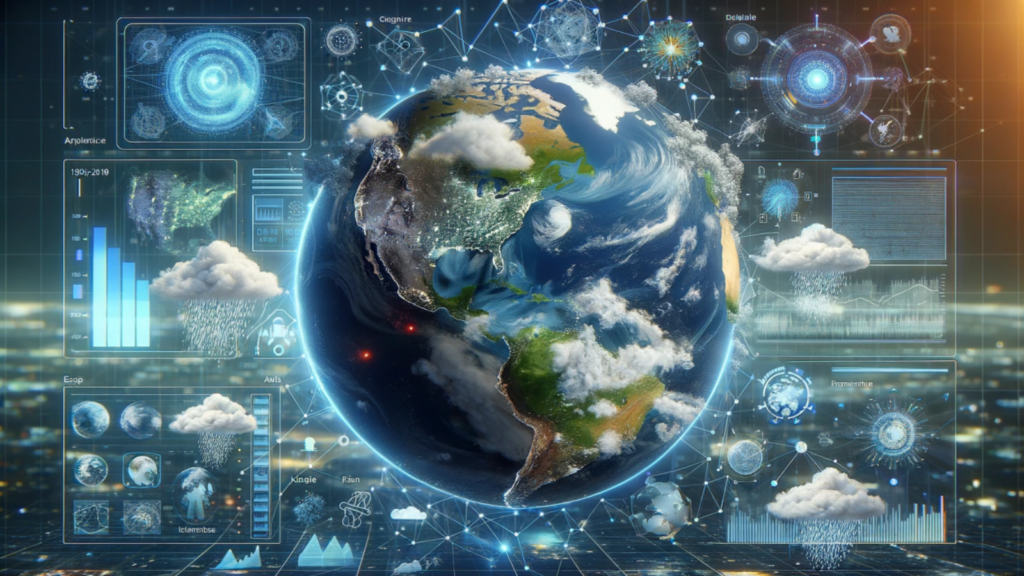As the world becomes increasingly tech-savvy, even the weather isn’t left behind. Welcome to the fascinating realm of weather tech, where cutting-edge technology meets meteorology, transforming the way we predict, understand, and interact with the weather.
From advanced forecasting tools to weather-responsive gadgets, this weather tech is reshaping our daily lives and industries across the globe. It’s not just about having an umbrella ready for a rainy day anymore; it’s about harnessing data to mitigate weather-related disasters and optimize various sectors, including agriculture, aviation, and energy.
Weather Tech
Delving deeper into the subject of weather tech, it’s essential first to grasp the concept and then understand how it has evolved over time.
The Concept Behind Weather Tech
Weather tech logistically involves the integration of modern technology with meteorology. Within this framework, various gadgets, software, and systems empower individuals and industries to predict and respond to weather changes accurately. By harnessing weather data, these tech tools enable data-driven decision-making, fostering efficiency and reducing weather-related risks. For instance, agriculture can utilize weather tech to manage irrigation schemes, pointing to lower water usage and improved crop yields in response to weather conditions.
Evolution of Weather Tech Over Time

Historically, weather forecasting heavily relied on observation and experience. It included techniques such as observing cloud formations or animal behaviors. While these methods were of some merit, they often lacked precision and were subject to human error. However, the entry of technology marked a drastic shift in the approach towards understanding and forecasting weather.
In the past decade, advancements like radar technology and satellites have significantly improved forecasting accuracy. This progression continues with the inclusion of technologies like artificial intelligence and machine learning. These technologies, while developing weather tech models, ensure accurate weather prediction, benefiting industries outside aviation and shipping to include the likes of energy, agriculture, and disaster response planning. Meanwhile, insurers can predict natural disasters more accurately, leading to prompt response and recovery efforts, and minimizing economic damages.
The Importance Of Weather Tech
Weather tech holds considerable significance in today’s world. Its role in confronting varied challenges, ranging from climate change to disaster management, is apparent in diverse sectors globally.
Weather Tech and Climate Change
The rise in global temperatures, increase in sea levels, and rapid melting of polar ice caps – all signs of climate change, imply the need for accurate weather monitoring. Through the precision that weather tech provides, tracking changes, predicting weather patterns, and devising appropriate measures becomes feasible.
Take, for instance, satellites. They provide global coverage, unearthing valuable data on atmospheric conditions, temperature trends, and weather patterns. Information gathered from satellites serves as a critical resource for scientists to scrutinize climate change impacts in remote locations unapproachable by humans.
Weather Tech in Disaster Management

Escalating instances of natural catastrophes affirm the need for tech-powered responses. Weather tech equips disaster management agencies with accurate predictions essential for formulating response strategies.
Weather tech hands-on approach entails data collection, analysis, and prediction concerning potential disasters. Remote sensing instruments, like LiDAR and RADAR, provide real-time imagery and data, enhancing predictions and preparedness for disasters. For instance, these instruments have assisted FEMA and other agencies in well-timed evacuations and effective hazard management in hurricane-prone areas.
Artificial Intelligence (AI) too contributes, attributing to early disaster detection. Sophisticated AI models analyze patterns from historic and real-time data, detecting anomalies that may suggest impending disasters. Notably, Google’s Flood Forecasting Initiative employs AI to predict floods accurately, alerting communities in danger with reasonable lead time.
Need To Know About Weather Tech
Weather tech transformative power is undeniable. It’s reshaping how we predict and respond to weather events, making a significant impact across diverse sectors. Weather Tech is about leveraging these insights for better disaster planning, aiding agriculture and energy sectors, and tackling the challenges of climate change. As tech advances, so does our ability to understand and adapt to our ever-changing climate. The role of weather tech in our future is clear: it’s a vital tool in our arsenal as we navigate the complexities of a changing world. Through weather tech, we’re not just predicting the weather, we’re preparing for it.

